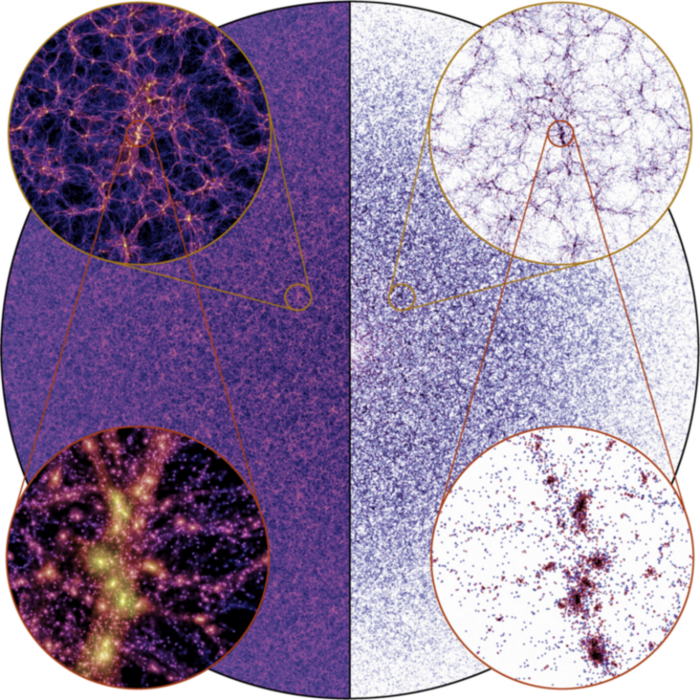
The MillenniumTNG Project
Goals
The MillenniumTNG simulations build on the highly successful hydrodynamical project IllustrisTNG and combines it with the much larger volume reached by the iconic dark matter-only Millennium simulation of more than a decade ago, thereby directly linking the cosmological need for ultra-large simulation volumes to the recent progress achieved with hydrodynamical simulations. We achieve this with a special, two-pronged simulation strategy, consisting of a hydrodynamical simulation in the Millennium’s original 500 Mpc/h = 740 Mpc volume combined with a series of matching dark matter-only runs, as well as with a dark-matter only simulation with a trillion particles and an explicit treatment of massive neutrinos in a 3000 Mpc volume.
The link between the hydrodynamic simulation and the dark matter-only runs is established through semi-analytic galaxy formation models calibrated against the full hydro results, and by applying them to populate a seamless lightcone produced by the large N-body calculations on the fly. We also use a variance suppression technique to boost the effective volume probed by the simulations into the regime required for the upcoming large surveys.
Core Team
-
Max Planck Institute for Astrophysics:
Volker Springel (PI), Rüdiger Pakmor, Simon White, Cesar Hernandez-Aguayo, Monica Barrera, Fulvio Ferlito -
Harvard-Smithsonian Center for Astrophysics:
Lars Hernquist, Boryana Hadzhiyska, Rahul Kannan, Ana Maria Delgado -
Institute for Computational Cosmology, Durham University:
Carlos Frenk, Sownak Bose
Further Team Members
-
Donostia International Physics Center:
Sergio Contreras, Raul Angulo -
University of La Serena:
Cristian A. Vega-Martínez -
Konkoly Observatory:
Eniko Regos
Data Release
All simulation data of the MillenniumTNG project is foreseen to be made fully publicly available on this site in 2024.
Contact info
Please send questions or comments about this page to Volker Springel.